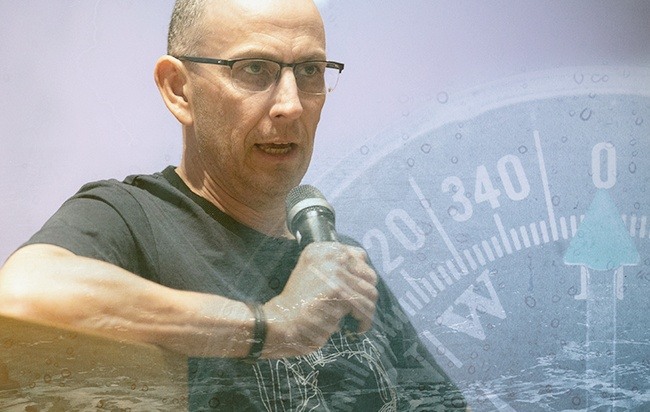
In the past couple of weeks my partners and I were focused on adjusting our company to the new reality post Corona. As almost any other company in the world, in the first few days we were in shock, panic and maybe also a bit of denial. But we all understood that we need to react immediately and adjust quicker than others, if we want to end up with some gains from this tragedy.
One of the most insightful inputs we came across and helped us tune our behavior and cope with our role as leaders of a company was this:
The five most non-obvious tensions in crisis management: a leadership perspective
By: Moty Cristal, CEO, NEST, Negotiation Strategies
Change your mindset. When a crisis hits a company, organization or a society, a whole set of psychological drivers take control over leaders’ actions and decisions. Being aware that your classic decision-making mechanism (whatever it is) is now disrupted and you are controlled by the crisis dynamics is essential. And the sooner – the better. Understanding that you are now lead and operate under a “crisis mode”, which is significantly different than routine, or even company’s business hardships, requires navigating carefully the following five, non-obvious, tensions:
- Collaboration vs. Confrontation. Once the scope of crisis has been identified, (which by itself is amongst the early steps in a structured crisis management process), a leader has to take a strategic decision. Either adopting an aggressive behavior towards relevant stakeholders (employees, suppliers, partners, etc.) which aims to minimize own damages and costs, or adopting a collaborative approach which – under certain crises scenario – supports a wider benefit (beyond your own). There’s no “right” answer, and it always depends on the scope of the crisis. Each attitude has its consequences in given reality.
- Collaboration vs. Collaborative decision making. A collaborative decision making is a blessed, and usually beneficial leadership pattern in daily life. However, in crisis mode, when decisions, and actions, need to be taken quickly in order to prevent further escalation or damages, time factor becomes crucial. Hence, collaborative decision making, which takes time, might not be the appropriate leadership pattern. Nevertheless, collaborative decision making, and excessive consultations carry the risk of amplifying the well-documented psychological procrastination in crisis decision making. In times of crisis, very few and crucial decisions should be taken quickly by the leadership based on their own understanding of what is best. This is why they are leaders.
- Crisis manager vs. Decision Maker. A company or an organization which simulates and prepares for crisis scenarios, learn to differentiate between two roles: the crisis manager and the decision maker. Since managing a crisis requires coordinating and monitoring various activities, on multiple frontiers, assess crucial information, determining strategic alternatives, and assess consequences of actions taken for the decision-maker. Load of work, both operationally and mainly emotionally, on the decision-maker’s shoulders is immense, hence a role of an objective, professional, crisis manager, who is familiar with the organization, and yet not the “person-in-charge”, is one of the foundations of effective management of crises.
- The Legitimacy Gap. Not all leaders cope with crises with the same courage and self-control as others. At the same time, each leadership enjoys a different level of support from its colleagues, board members, investors or clients. In times of crisis, when personal considerations (such as what will be with my personal career?) mix with professional decision making, the “legitimacy gap” has a dramatic impact on crisis management, which is difficult to foresee. Unpopular leader (CEO with an adversarial board, for example) could, on one hand, choose a confrontational strategy or on the contrary – could use a long, procrastinating, consultation process in order to be “likable”.
- The Failure of “Magnetic Middle”. The Magnetic Middle is one of the most common decision-making biases in routine times. Leaders seek the “middle”, to compromise between different courses of action. This tendency seeks the “benchmark” or “the industry standard” as a guiding principle in decision making. However, crisis time requires a unique, tailor-made, course of action to any particular company. The quest to see what other organizations did in times of crisis, most likely, will lead to an error, as any crisis, for any organization, has its own unique context.
 Moty Cristal being interviewed by Shoham Eckhaus for the B2B Startup Growth Podcast
Moty Cristal being interviewed by Shoham Eckhaus for the B2B Startup Growth Podcast
About Moty Cristal
Moty is a professional negotiator, and leading expert on crisis management. Harvard Kennedy School graduate (1998), Lt. Col. (Res.) in IDF, and former negotiator for the Government of Israel. Founder of NEST, Negotiation Strategies Ltd, which provides consulting services for complex negotiations in routine and during various crisis scenarios. Trains, publishes and supports leaders worldwide.

by Shoham Eckhaus on April 06, 2020
As Chief Strategy Officer at Penguin Shoham leads client strategy and manages an internal team of Inbound Consultants. To get her strategy tuned she starts each morning with Yoga and a big smile :)





